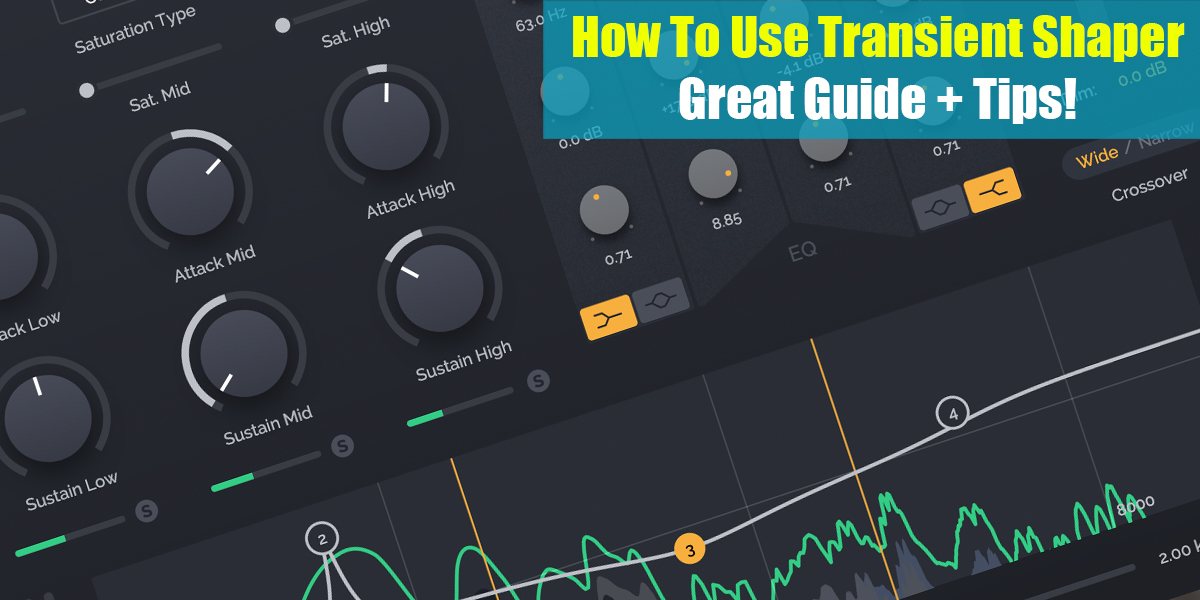How To Fix Muddy Mixes
Introduction
Many people who are new to mixing complain that their mixes sound muddy. There is a lot of frustration associated with muddy sounds as it means a lack of clarity and definition of a particular instrument or sound as well as a lack of separation between the instruments.
Clarity is essential when it comes to mastering and mixing music. In the event that your track sounds muddy or muffled, it can be difficult to discern individual tracks. The instruments may lack clarity, causing them to blend together and sound muddled.
This guide provides a list of tips on how to fix muddiness when mastering and mixing music. Throughout this article, we will discuss the most common causes of muddy mixes and how to avoid them.
1. Get it Right at the Source
The first line of defense against a muddy mix begins before mixing. You will have a much smoother mix process if you begin with tracks that already sound good. Experienced engineers usually swear by the concept of “getting it right at the source.”
It is important to control the low frequencies at the source in order to avoid muddiness later on. As an example, some microphones are equipped with a switch that allows low frequencies to be rolled off. Consider using it if you are tracking a particularly bassy source, or if you are experiencing proximity effects.
Controlling your bass is even easier if your sounds are synthesized or sampled in your DAW. Using the built-in filters, edit your synth patches as you work so that your low end does not overwhelm the other parts of your composition. By controlling the low-end frequencies at the source, you can avoid muddiness early on.

2. Subtractive EQ
We have previously discussed subtractive EQ in various articles. Utilizing this tool properly early on can save a great deal of time. Furthermore, it is likely to be the key to cleaning up a muddy mix. The frequency range of mud is generally between the mid-range frequencies of 200 and 500 Hz.
It is generally believed that frequencies between 250 and 350 Hz are the most problematic. It will do wonders for a mix if you carefully carve away this range from the more dominant mix elements. Be careful, however. Generally speaking, our ears prefer music that lacks low-mid frequencies.
This results in a tendency to get carried away. As a result, we are left with something we call the ‘smiley face’ mix. In a parametric EQ, this can be observed visually. Across the spectrum, low frequencies and high frequencies are positioned above the mids, creating a U-shaped pattern. You will lose power if you remove too much from your low mids.
3. Multiband Compression
Another helpful tool for fixing muddy vocals is multiband compression, which shares many similarities with dynamic EQ. This approach has the advantage of sounding more natural and reducing problematic frequencies only when they become louder than the threshold that you have set.
In contrast to traditional compression, which aims to compress the entire frequency spectrum, multiband compression allows you to focus on a specific range of frequencies. As opposed to dynamic EQ, this type of EQ focuses on a single frequency rather than a range of frequencies. Even though both can achieve very similar results, they handle problems differently.
Multiband compressors also tend to have built-in range functionality, which is another advantage. No matter what other parameters are set, the range limits how much gain reduction can be achieved within the compressor. The compressor will not be able to reduce the sound by more than 3 decibels within the range.

4. Panning Against the Mud
In order to set yourself up for success later on, panning is crucial when you are putting together your first rough mix. A good panning will give each instrument its own space in the stereo image, ensuring that it does not compete with other instruments. Start by placing the lead vocals in the center. The same is true for bass guitar too.
When you have those centered, you can pan everything else around them. However, it is best to place instruments that sound similar on opposite sides of the room. Find a good medium, and don’t hard pan to the left or right unless it fits. Make sure that your entire mix also does not have heavy left or right components, except if that was your intention.
Mixes with poor panning can appear to be boring. You should therefore check for the balance on a regular basis. Listen to your pans using headphones and monitors to get a clear sense of how they are performing. Stereo images are exaggerated when using only headphones.
5. Work On Your Balance
There are times when a poor arrangement will create bass imbalance and unnecessary frequencies and mud within a mix on its own. Therefore, you should consider the balance of your songs. Do you feel that the bass is unbalanced in relation to the rest of the mix? Do your kick drums compete too heavily with your bass instruments?
It is important to note that a fader is a powerful tool in and of itself, so lowering or adjusting levels according to taste can result in less mud. If you would like to hear a bass drum or kick while the bass is playing, you can also use techniques such as sidechain compression so that you do not have to overcompensate in volume.
There is also the possibility that your instruments with higher frequencies are much too loud. A reference track is a useful tool for determining how different frequency ranges relate to one another. Working on balance will not only provide more headroom for your master bus but will also enable you to fix muddiness with a simple knob turn.

6. Use a Reference Track
The fact that you spent hours mixing does not necessarily imply that it was done correctly. Over time, our ears naturally become fatigued, so taking breaks while mixing can be an important element to help avoid ruining your track.
Without comparing your mix to a professional release, it is difficult to determine if it sounds muddy or undefined. A/B your mix alongside a song from your favorite CD or iTunes collection (do not use compressed tracks). It could be imported into your DAW for quick comparisons, or you could simply listen to it through the same speakers or headphones.
Make sure you do not remove too much of the 200-500Hz range when applying EQ, as this may result in brittle-sounding mixes. The use of a reference is not limited to the treatment of muddiness. To check the balance of your mix, you can use a reference track.
7. Alternatives to Panning
The use of panning is a great way to remove mud from a mix without sacrificing certain elements. It may be necessary to make better use of your stereo field if you are experiencing crashing mixes that sound overly populated.
Panning wide can sometimes feel unnatural because it can lead to an unbalanced mix. By using the center point as a mirror and panning elements of your mix cleverly, you can effectively tidy things and build up well. There is more to space than just left and right.
By using frequency range and reverb, we can also spread our sounds up and down. Consider your compositions in advance and avoid using too many sources of sound that will fall within the same frequency range. To create a sense of depth within your mix, you should combine dry and wet signals.
Conclusion
There has never been a time when mixdowns on tracks have been as clear, present, and powerful. The importance of maintaining a low level of unwanted frequencies in your mix on a particular track cannot be overstated.
The above tips will help you to prevent muddy frequencies from entering your song during the recording process and know which frequencies you should EQ out during the mixing process.
That’s all we have to say. Many people experience problems that their mix sounds muddy. When you put all your tracks together, what you get is a pile of unclear muddiness rather than a full, thick sound.
There will be times when you encounter muddy sound mixes, but the key is to know how to correct them. Now that you have a better understanding of these strategies, we hope you will be able to apply them to your next song mix.






